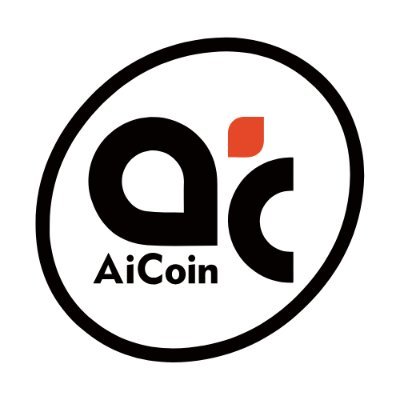*Understanding the Differences Between Security Token Offerings and Initial Coin Offerings*
The rise of blockchain technology has led to the development of new fundraising models, including Security Token Offerings (STOs) and Initial Coin Offerings (ICOs). While both models have gained popularity, they have distinct differences in terms of their regulatory requirements, investor rights, and use cases.
Security Token Offerings (STOs)
STOs are a type of fundraising event in which a company issues and sells security tokens to investors. Security tokens are digital tokens that represent ownership in a real-world asset, such as a company, property, or investment contract. STOs are subject to federal securities laws and regulations, which provides a higher level of investor protection.
Initial Coin Offerings (ICOs)
ICOs are a type of fundraising event in which a company issues and sells utility tokens to investors. Utility tokens are digital tokens that provide access to a specific product or service. ICOs are often unregulated, which can increase the risk for investors.
Key Differences Between STOs and ICOs
The key differences between STOs and ICOs include:
- *Regulatory Requirements*: STOs are subject to federal securities laws and regulations, while ICOs are often unregulated.
- *Investor Rights*: STOs provide investors with ownership rights in a real-world asset, while ICOs provide access to a specific product or service.
- *Use Cases*: STOs are typically used for fundraising for real-world assets, while ICOs are used for fundraising for products or services.
Benefits of STOs
STOs offer several benefits, including:
- *Increased Investor Protection*: STOs provide a higher level of investor protection due to their regulatory requirements.
- *Improved Transparency*: STOs provide a clear and transparent record of ownership and transactions.
- *Increased Liquidity*: STOs can increase liquidity in the market by providing a new way for investors to buy and sell securities.
Benefits of ICOs
ICOs offer several benefits, including:
- *Flexibility*: ICOs provide a flexible fundraising model that can be used for a wide range of products and services.
- *Increased Accessibility*: ICOs can increase accessibility to fundraising for companies that may not have had access to traditional fundraising models.
- *Innovation*: ICOs can drive innovation by providing a new way for companies to raise funds and develop new products and services.
Risks and Challenges
Both STOs and ICOs come with risks and challenges, including:
- *Regulatory Risks*: The regulatory environment for STOs and ICOs is still evolving and may change in the future.
- *Market Risks*: The value of tokens issued in STOs and ICOs can fluctuate rapidly due to market volatility.
- *Security Risks*: STOs and ICOs can be vulnerable to hacking and other security risks.
Conclusion
In conclusion, STOs and ICOs are two distinct fundraising models that have gained popularity in recent years. While both models have their benefits and risks, they differ in terms of their regulatory requirements, investor rights, and use cases. By understanding the differences between STOs and ICOs, companies and investors can make informed decisions about which model is best for their needs.
Robert Kiyosaki Says Crash Has Landed—Recession Here, Depression Next, Buy Bitcoin
Robert Kiyosaki, author of the best-selling book Rich Dad Poor Dad, has once again sounded the alarm on the global economy—this time declaring that the financial collapse he has long warned about is no longer a future threat but a present reality. His book has been a global best-seller for over two decades and translated into more than 50 languages worldwide.
Kiyosaki shared on social media platform X on April 4: “I warned the biggest stock market crash in history was going to wipe out the financial security of millions of investors… especially my generation… the baby boomers.” The famous author continued:
That stock market crash arrived today. We are definitely in a recession and more than likely… a depression.
The acclaimed author explained why he’s been urgently cautioning baby boomers in particular, writing: “Why was I warning boomers? Because boomers are out of time… or as pilots say: ‘They are running out of runway.’ They do not have time to ‘Invest for the long term in stocks, bonds, mutual funds, or ETFs.'”
Turning to solutions, Kiyosaki offered his long-standing advice: “What can a person do? As I have been suggesting for years, I suggest looking at non-Wall Street assets.” He stressed: “For many years I have suggested saving real gold, real silver, and today bitcoin.”
Backing his recommendation, the renowned financial educator wrote: “Why: Because after this paper market crash wipes out millions of fake paper assets… odds are the Fed and Treasury will turn the printing presses on full speed… printing trillions in fake money which becomes even more fake… And real money… gold, silver, and bitcoin go up in value.”
He concluded:
If you still have ‘some runway left,’ you may want to save real money which are gold, silver, and bitcoin.
Kiyosaki has consistently warned about the collapse of fiat currencies, the decline of the U.S. dollar, and the failure of traditional financial systems. He views gold, silver, and bitcoin as “real money” and essential lifeboats in what he believes is a rapidly sinking economic ship. In December last year, Kiyosaki predicted a historic crash, advising boomers to sell homes, stocks, and bonds before it’s too late.
免责声明:本文章仅代表作者个人观点,不代表本平台的立场和观点。本文章仅供信息分享,不构成对任何人的任何投资建议。用户与作者之间的任何争议,与本平台无关。如网页中刊载的文章或图片涉及侵权,请提供相关的权利证明和身份证明发送邮件到support@aicoin.com,本平台相关工作人员将会进行核查。
JPMorgan Unleashes ‘High Anxiety’ Forecast as Trade Tensions Threaten Meltdown
JPMorgan issued a stark warning about growing economic risks on April 4, as Richard Madigan, chief investment officer of its private bank, outlined the potential consequences of escalating tariffs. In a note titled “High Anxiety: Market Implications of Tariffs,” Madigan described a dramatic shift in the market narrative, from optimism to fear, as trade tensions deepen. “Liberation to isolation,” he wrote, following China’s decision to impose a 34% counter tariff on all imported U.S. goods. He warned that the current policy path may drive the U.S. and global economies closer to recession.
The JPMorgan executive projected that tariffs, if left in place, could push inflation up by “+1-2%” and take a comparable toll on economic growth. He warned:
If the U.S. tariffs announced stick and we don’t see further tit-for-tat escalation, rising concern of slower growth and higher inflation may become something worse, a race to recession. Self-inflicted pain.
He advised investors to monitor 10-year bond yields closely, as a drop would suggest markets are increasingly pricing in recession risk. Madigan also flagged corporate earnings expectations as overly optimistic: “I expect the 10% earnings forecast this year will quickly ratchet lower. The same for next year.”
Madigan likened the U.S. trade stance to an overly aggressive opening in a negotiation: “We’re watching in real time a ‘101-class’ on negotiation. It begins with anchoring.” But when starting points are “absurdly high,” he cautioned, credibility suffers. “No one’s happy with the tariffs announced except the President,” Madigan wrote, suggesting the current approach risks alienating trading partners and dragging the global economy down.
On monetary policy, he pushed back against expectations for four Federal Reserve rate cuts, stating:
That strikes me unlikely. I’m anchoring on one, the second half of this year. If growth abruptly turns lower, perhaps two. Time will tell.
With consumer spending faltering and companies potentially scaling back hiring, the JPMorgan executive concluded: “Tail risk is higher, markets aren’t inexpensive, the outlook’s uncertain.”
免责声明:本文章仅代表作者个人观点,不代表本平台的立场和观点。本文章仅供信息分享,不构成对任何人的任何投资建议。用户与作者之间的任何争议,与本平台无关。如网页中刊载的文章或图片涉及侵权,请提供相关的权利证明和身份证明发送邮件到support@aicoin.com,本平台相关工作人员将会进行核查。
Robert Kiyosaki: Bitcoin is the Answer as Financial Collapse and US Recession Begin with $6.4T Loss
Financial author Robert Kiyosaki declared Friday’s sharp market downturn confirms the financial collapse he has predicted for decades, stating the U.S. is now in a recession and potentially a depression.
His comments came as global stock markets shed trillions, driven by new U.S. tariffs and swift Chinese retaliation.
Major U.S. tech stocks were hit hard. Apple, Microsoft, and Nvidia shares fell sharply Friday (7.3%, 3.56%, and 7.36% respectively), extending Thursday’s losses. Amazon, Alphabet (Google), and Meta also saw significant declines (4.15%, 3.20%, 5.06%).
The sell-off, wiping a reported $6.4 trillion from global equity markets according to the New York Post , followed new U.S. tariffs taking effect and immediate Chinese countermeasures, including hefty import taxes and company blacklists.
In contrast to traditional markets, the crypto market demonstrated resilience. After an initial dip, the total crypto market cap recovered quickly, bouncing back to $2.76 trillion.
Bitcoin notably rebounded from lows near $81,000 to trade back above $83,000
Related: Standard Chartered: Bitcoin Correction Linked to Stock Market Dip
Taking to social media, Kiyosaki claimed the crash validates warnings from his book “Rich Dad’s Prophecy,” particularly regarding risks to baby boomers’ retirement savings in traditional assets like stocks, bonds, and mutual funds.
Instead, Kiyosaki urged Americans to consider alternative stores of value like Bitcoin. “As I have been suggesting for years, I recommend saving real gold, real silver, and today, Bitcoin,” he wrote.
He added that the value of these assets will rise as the U.S. dollar weakens and inflation surges. “Gold, silver, and Bitcoin are not going up in price — the dollar is going down in value.”
While Kiyosaki’s warnings resonate with some, others point out that he has made similar predictions during past financial crises, such as the Global Financial Crisis, which didn’t fully materialize as expected.
Jim Vitek also suggests that the market may not yet be in a “bubble” state, indicating more room for equities to lose value before a crash.
Related: Kiyosaki’s Stock Market Crash Warnings Look Prescient—Bitcoin: The Safety Net & Discounted Asset
The market downturn followed the latest round of U.S. trade measures targeting imports from China, the EU, and other nations. China’s response was immediate and forceful.
European markets followed suit, with the UK’s FTSE 100 dropping 4.9% and Germany’s DAX falling nearly 5%. Japan’s Nikkei lost over 2.7%, with Prime Minister Fumio Kishida calling the situation a “national crisis.” Meanwhile, President Donald Trump dismissed concerns over the market crash, pointing instead to job growth and economic fundamentals. “Hang tough. We can’t lose,” he wrote on social media.
Disclaimer: The information presented in this article is for informational and educational purposes only. The article does not constitute financial advice or advice of any kind. Coin Edition is not responsible for any losses incurred as a result of the utilization of content, products, or services mentioned. Readers are advised to exercise caution before taking any action related to the company.
Ripple Talks ISO 20022—Is XRP the Future of Compliant Payments?
Since Ripple’s inception, its innovativeness in fin-tech has been centralized around augmenting global payments. In the referential talk by SMQKE , Marcus Treacher, the ex-head of the Ripple tech team, shed more light on the company’s consistent and long-standing position about ISO 20022 —a standard that could potentially be the next big thing in global financial messaging.
SMQKE has also pointed out that the ISO 20022 protocol, which enables data to be shared among financial systems without any interruptions, appeared in 2004—the year of Ripple’s establishment. This parallelism, as argued by SMQKE, is something worthy of citation. As other companies are still trying to adopt the new compliance framework, Ripple has never ceased to make everything ready for compliance from the beginning till now.
“We’ve always had a real focus on removing all that friction,” Treacher said, emphasizing the company’s intent from the beginning.
RippleNet, established in 2016 and 2017, was a direct response of Ripple to the fragmented condition of the market of cross-border transactions. It took on a logical supervision layer, which was a good fit for the ISO 20022’s call for uniform, enriched financial messaging. RippleNet was always focused on and prioritized the accuracy and complement of the data parallel to the payments it handled.
Each traditional SWIFT and TIPS network is still using old messages that they operate with. Ripple, in turn, migrated to the new standard with compatibility in mind. Despite this, the U.S. Federal Reserve is not free of the problem with the old infrastructure. ISO 20022 is a standard that addresses these issues, and Ripple has not only accepted the transformation but has also welcomed the shift.
Treacher emphasized that Ripple’s idea was more of making the process of moving across borders simple, better than anything to a certain technology. At first, XRP was used for liquidity provision between different fiat currencies, and then later, its role was taken by the Interledger Protocol , which was faster for fiat-to-fiat transactions.
Pegah Soltani, Ripple’s Head of Payments Products, echoed this focus in a separate interview shared by SMQKE. She described ISO 20022 as a global standard that boosts competition, encourages innovation, and delivers better data within each transaction. Her comments underscore Ripple’s broader ambition to not just be compliant—but influential.
After protocol integration, Ripple’s advancement didn’t come to a standstill. As an example, RLUSD, a dollar-backed stablecoin, was brought to the Ripple Payments system by the company in April 2025. The coin, which was released just the past December, has a market capitalization of $250 million.
Still, not everything has been smooth sailing. XRP, Ripple native token, is 5.25% surge amidst the President Donald Trump announced a new wave of tariffs, triggering market-wide concerns.


 Harga terendah
Harga terendah Harga tertinggi
Harga tertinggi 













































